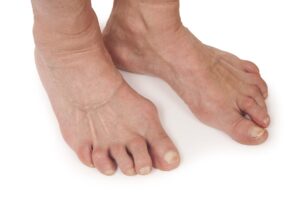What is a Stress Fracture?
Stress fractures are tiny cracks in a bone caused by repetitive force. This most often occurs due to overuse. i.e., such as running long distances. Stress fractures can also develop from normal use of a bone that’s weakened by a condition such as osteoporosis.
Stress fractures are most common in the weight-bearing bones of the lower leg and foot. Track and field athletes and military recruits who carry heavy packs over long distances are at highest risk, but anyone can sustain a stress fracture. If you start a new exercise program, for example, you might develop stress fractures if you do too much too soon.
What Causes a Stress Fracture?
Bone adapts gradually to increased loads through remodelling, a normal process that speeds up when the load on the bone increases. During remodelling, bone tissue is destroyed (resorption), then rebuilt.
Bones subjected to unaccustomed force without enough time for recovery resorb cells faster than your body can replace them, which makes you more susceptible to stress fractures.
What are the Symptoms?
The most common symptoms of a stress fracture are:
- Pain during a run that gets worse as you go.
- A sharp pain that you can pinpoint on a bony area, it might feel tender to touch.
- Pain when resting especially at night time
- Swelling on the top of the foot or on the outside of the ankle.
- Changes to your running form
How can I avoid them?
Simple steps can help you prevent stress fractures.
- Make changes slowly. Start any new exercise program slowly and progress gradually.
- Use proper footwear. Make sure your shoes fit well and are appropriate for your activity. If you have flat feet, ask your doctor about arch supports for your shoes.
- Cross-train. Add low-impact activities to your exercise regimen to avoid repetitively stressing a particular part of your body.
- Get proper nutrition. To keep your bones strong, make sure your diet includes enough calcium, vitamin D and other nutrients.
If you are having problems with pain in your lower legs and feet from running or just want to get into a good running style, don’t hesitate to call us on 9569 5145 or make a booking online and the team at Sole-Lution Podiatry will sort you out. We are located at 398 Marrickville Rd, Marrickville, NSW, 2204.






